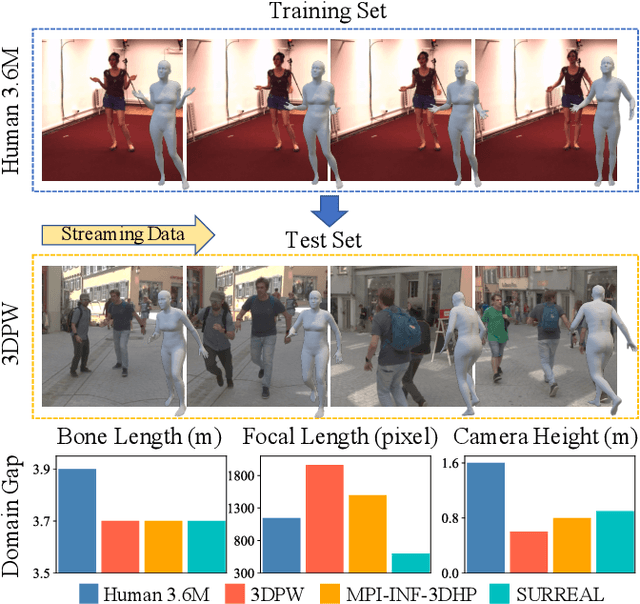Out-of-Domain Human Mesh Reconstruction via Dynamic Bilevel Online Adaptation
Paper and Code
Nov 07, 2021



We consider a new problem of adapting a human mesh reconstruction model to out-of-domain streaming videos, where performance of existing SMPL-based models are significantly affected by the distribution shift represented by different camera parameters, bone lengths, backgrounds, and occlusions. We tackle this problem through online adaptation, gradually correcting the model bias during testing. There are two main challenges: First, the lack of 3D annotations increases the training difficulty and results in 3D ambiguities. Second, non-stationary data distribution makes it difficult to strike a balance between fitting regular frames and hard samples with severe occlusions or dramatic changes. To this end, we propose the Dynamic Bilevel Online Adaptation algorithm (DynaBOA). It first introduces the temporal constraints to compensate for the unavailable 3D annotations, and leverages a bilevel optimization procedure to address the conflicts between multi-objectives. DynaBOA provides additional 3D guidance by co-training with similar source examples retrieved efficiently despite the distribution shift. Furthermore, it can adaptively adjust the number of optimization steps on individual frames to fully fit hard samples and avoid overfitting regular frames. DynaBOA achieves state-of-the-art results on three out-of-domain human mesh reconstruction benchmarks.
 Add to Chrome
Add to Chrome Add to Firefox
Add to Firefox Add to Edge
Add to Edge